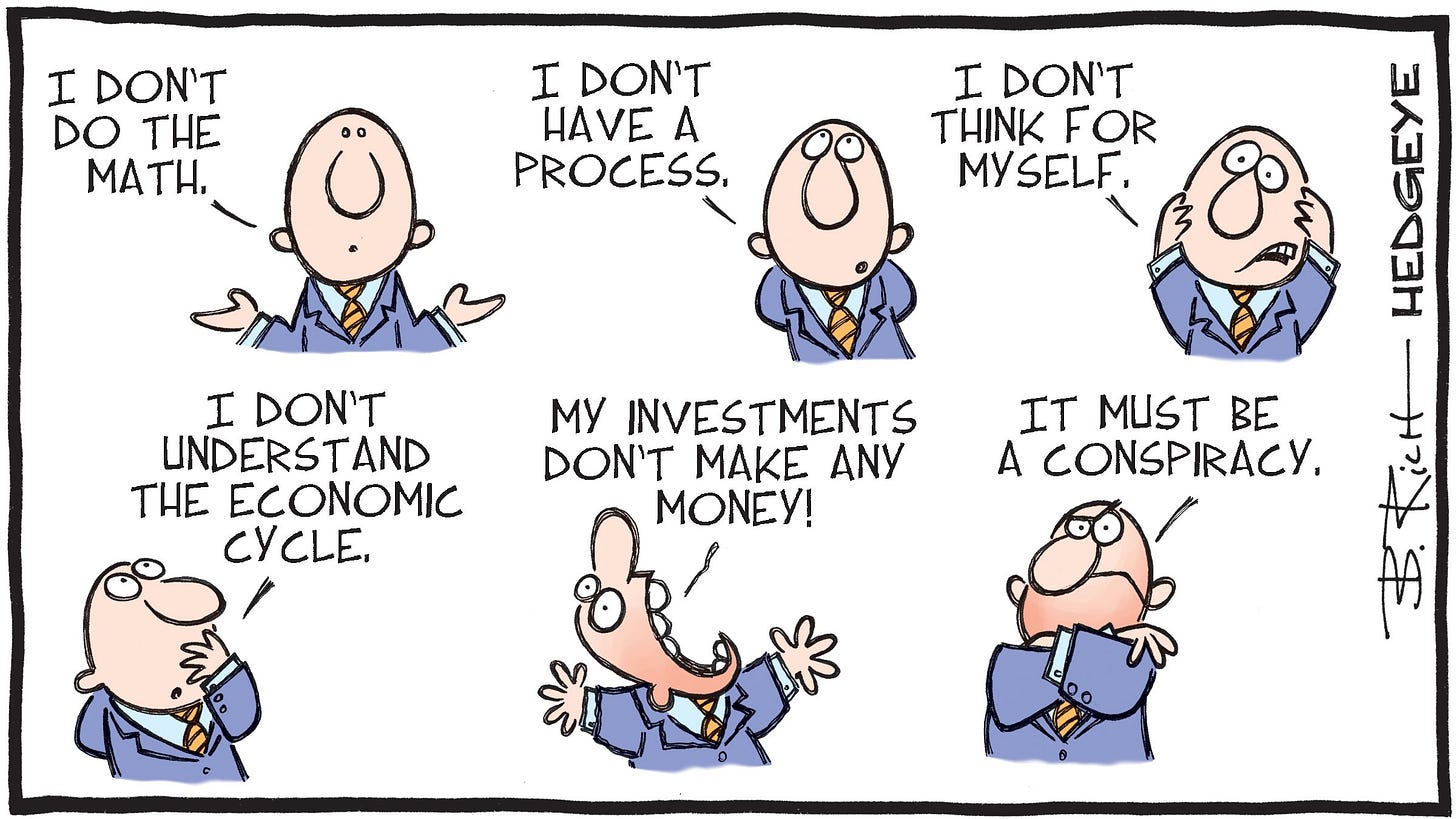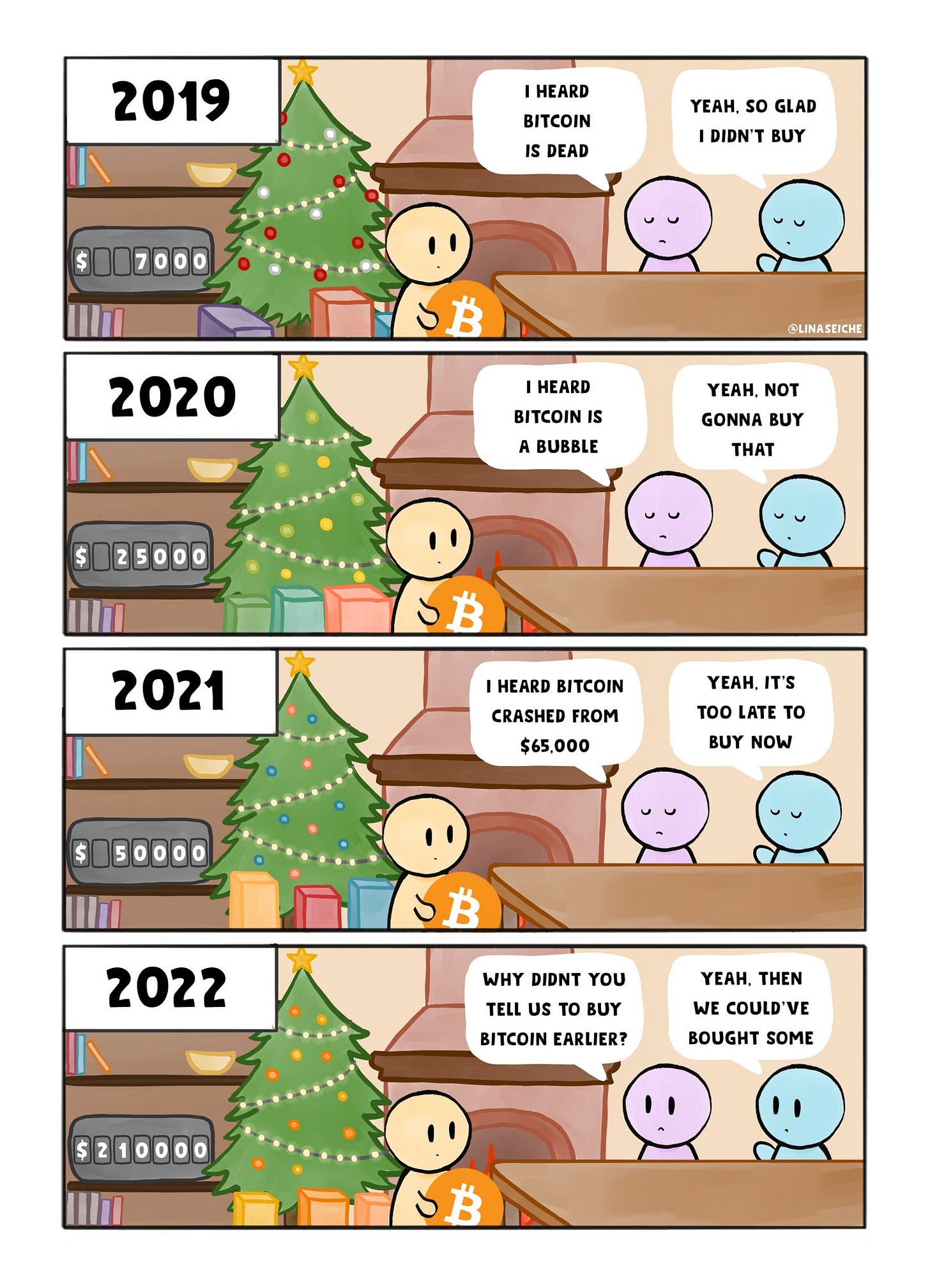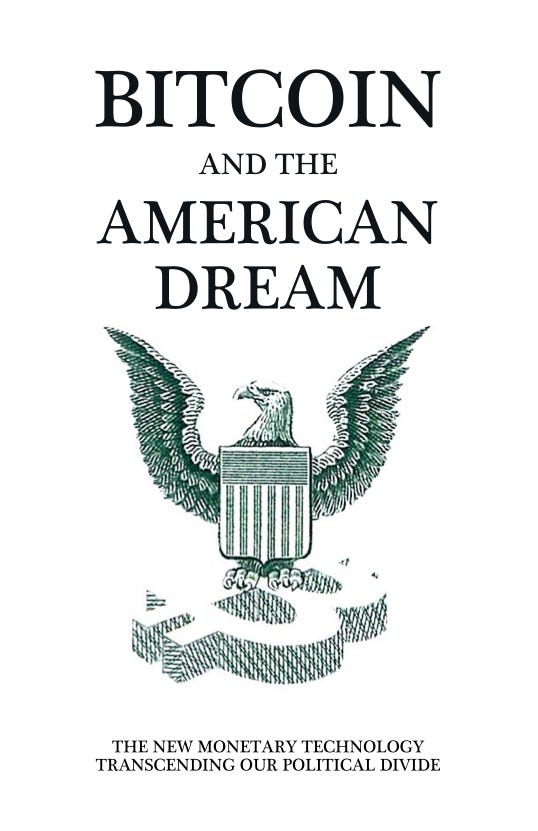Jack Dorsey and the VCs. Bitcoin Tech Talk #272
Jack Dorsey had quite the encounter online this week, particularly with this tweet which had some consequences.
The tweet was not in response to anything, but a broadside against the game that VCs have been playing for the last 8 years. He ended up getting blocked by none other than Marc Andreesen of A16Z, which seems to have had the most VCs and portfolio companies responding to him in various ways. What was remarkable was that he didn’t back down at all and proceeded to rebuff all attempts by these VCs to convince him otherwise, making it clear to his followers that he’s a Bitcoin-only guy and that Web3 is a scam.
As you probably know from reading this newsletter, I’m in complete agreement with Jack on Web3 as an excuse to print money. What he pointed out about VCs is the topic that I want to discuss today. To do this, we must think about what the VC space has been in the past 8 years versus what it was before.
We have all heard about how visionary VCs funded companies like Intel and Apple and Facebook and how those companies grew with the help of the VCs. This is a story that VCs like repeating because it gets them better deal flow and gets them in the middle of the action. As I’ve opined before, I think their contributions to companies is hugely overstated, but there aren’t many people who are incentivized to say differently.
Clearly, VCs want to make themselves out to be heroes that help turn a good idea into unicorns and founders don’t want to piss off the VCs from whom they need money. Further, media get their stories from the VCs and get all their advertising from them, so they’re not going to piss off the VCs, either. Government officials tend to get wined and dined by the same people, so really, VCs have this very interesting niche where almost nobody says anything bad about them.
This is what makes Jack Dorsey’s criticism sting so much. VCs are not used to being criticized. If a portfolio company does well, they share in the glory. If they perform poorly, it’s blamed on something else (the market, regulators, competitors, bad luck). Rarely do they ever get any criticism, especially if they are getting a good rate of return.
The past 8 years have been crazy in the tech VC scene with the advent of token sales. The traditional model for VCs has been to get equity in return for capital, which startups generally lack. At a certain stage, the company gets bought or goes public, in which case the VCs make back their money and usually much more. Traditionally, this has meant a 7-10 year incubation period during which VCs would have to nurse these companies toward becoming a “real” company. This was a hard model for a long time. Most VCs in the 80’s lost most years and only hit on a few.
The 90’s changed everything with a new internet investor class that created demand for more high growth stocks in the market. Now companies could go public without showing profit and the numbers around them became crazier. This brought more VCs into the market, making funding companies more competitive, driving up their valuations. Companies stayed private longer and larger, making exits less frequent. The exits, however, were pretty lucrative.
Thus came the unicorn phenomenon where companies only seemed to go public after reaching a billion dollar valuation. For example, Coinbase IPO’d at a near $100B valuation earlier this year. The hits were extreme, but that also meant that there were a lot of losers in their portfolios, too.
What changed in 2013 was the advent of the token sale. This allowed VCs to get into a token at an early stage, but get liquidity on their assets much earlier than the 7-10 year windows typically needed in a VC-funded firm. Sure, you end up selling useless junk to the broader public, but who cares if you make money? This was a significant boon to the industry and many VCs have struck it rich buying tokens at a low valuation to dump them later on a gullible public. There’s nothing really being built and no useful goods or services being generated, but that doesn’t concern the VCs since their main concern is a good rate of return.
This is what Jack Dorsey is railing against. Web3 is just the latest in a line of useless speculative stuff to sell to the public, like altcoins, ICOs, IEOs, NFTs and DeFi before it. They have gotten away with it because they have the moniker of decentralization, giving them the argument that there’s no one really in control and thus, it shouldn’t be put under scrutiny. What Jack is saying is that they should be put under much more scrutiny because the VCs are the ones who control most of these tokens.
Such talk is refreshing because VCs have been an unquestioned group for a long time. They’re middlemen that capture lots of value while not adding much even in the best cases. In a tokenized world, they’re straight up conning the public out of their money along with the token founders while adding no value whatsoever. The scrutiny that they are now receiving with respect to these token sales is richly deserved and I am glad that Jack has brought this to the forefront.
What’s interesting here is that VCs have been going in this direction because of Bitcoin. Bitcoin gets way better returns than VCs, so to convince LPs, they’ve been playing this token sale game. VCs have a huge disadvantage in a Bitcoinizing world and they’re turning to extracting value from the public through buzzword sales and denigrating Bitcoin in the process to continue their value-capture. Of course, that which is unsustainable will not be sustained, so their days are numbered.
In other words, this is their high water mark and that the asset that competes with them directly will destroy them.
Bitcoin
Jeremy Rubin shows how you can do hash rate derivatives on chain called POW-Swaps. The idea is that miners can hedge their positions using this on-chain assuming they can find a counterparty. Because the data is all on-chain, there’s no need for an oracle, which definitely simplifies everything. That said, I wonder how much something like this would be used. There are already lots of ways to hedge almost anything, with all sorts of entities willing to take the other side of the trade. That said, the concept itself is pretty cool.
Krux is another DIY hardware wallet which can be built using off-the-shelf components, much like Specter and Seed Signer. The memory gets wiped every time, so the seed phrase is needed nearby. The project itself is cool in that it can generate QR codes which can then be printed using a thermal printer. Air-gapped wallets like this are great and I hope this project, like many others, gains traction. Do not use this yet for production stuff since it’s in beta.
Bull Bitcoin writes in the Bitcoin Support blog that multisig setups are not that great for non-collaborative setups. As they point out, multisig is very difficult and a pretty big headache, and the scenarios which it protects against tend to be remote. The article is bound to be controversial, but there’s some wisdom here. Sometimes we make our setups a bit too cute for our own good.
OpenSats is a platform to donate to Bitcoin open source projects. Their model seems to be to support developers from those projects with the donations and they have a lot of different supporting organizations, including many funds. While I always like to see these efforts, the fact that at least one Bitcoin troll is on the board of directors is a bit of a red flag for me.
Lightning
LNMarkets newsletter describes what hosted channels are and how they protect the user somewhat. Essentially, these are Lightning channels with no on-chain transaction, making it a custodial channel where you have to trust a custodian. This sounds scary, and it should, but it’s also got some nice properties because of the Lightning protocol. If a user doesn’t get what they’re due from the custodian, users can prove it. It’s not ideal, but as the newsletter explains it, it’s probably the least bad custodial wallet out there since there are claims you can make, even if you never see those coins.
HODLMeTight shows how to set up your lightning node on both clearnet and TOR with a bonus of VPN. The post goes through the tradeoffs of using each network and all the settings you need to make everything work properly. If you are a Lightning Router, this is probably a good idea as some connections will inevitably be more hidden than others.
Boltz is an exchange that uses Lightning to convert ShapeShift style, without any accounts. The interesting thing here is that you can convert Lightning amounts into on-chain amounts, making this something like a submarine swap. It will be interesting to see if from a regulatory perspective, a bitcoin-for-bitcoin exchange counts for KYC purposes. Shapeshift was forced by the government to start collecting customer information, but they were trading between different assets, this one is largely bitcoin-only, making it something like a coinjoin.
Economics, Engineering, Etc.
Nic Carter and Lucas Nuzzi show how proof-of-work is worth it. The piece is directed at FTX, which came out in favor of proof-of-stake as the preferred alternative. As they show, FTX is completely off base in thinking that high fees are the result of proof-of-work and they clearly have less than pure motives in promoting proof-of-stake. After all, exchanges are likely to be able to benefit hugely, as they’ll be able to influence those cryptocurrencies that use proof-of-stake in a way that they wouldn’t be able to do with proof-of-work. The blocksize war likely would have been won by the exchanges and businesses had Bitcoin been proof-of-stake.
Stephan Livera argues that we shouldn’t be getting to zero fiat, as tempting as that may be. His argument is mainly that there’s a good chance of getting wrecked in a bear market and that the reporting requirements are a big headache. I would say that this makes sense up until a certain amount of sats are stacked, at which point going all-in may make sense. That said, his perspective is one to keep in mind.
Ryan McMaken writes about the history of how the government came to control the money supply. The post is instructive and shows what led to fiat currency. The story involves coinage, banking and particularly credit which ultimately led to states wanting to control this sector to fund wars. The perniciousness and unfairness of the current system can’t be appreciated without the historical context shown in pieces like this.
Braiins OS examines the impact of temperature on the new Antminer X19 machines. It looks like the machines, like most, are sensitive to temperature and require less power the lower the ambient temperature. This is not particularly surprising, but experiments like this will matter quite a bit for all the different mining conglomerates as extracting a little more hashrate is the name of the game.
Hugo Nguyen debunks Ethereum rollups. This is Ethereum’s answer to lightning. If this sounds familiar, it should be. Plasma was supposed to be that answer, but they haven’t produced anything, despite raising lots of money through an ICO. So now, the hope is in another type of L2, which Hugo shows will be much more expensive to run than the already very expensive Ethereum base chain. The post is informative in the level of hand waving and outright deceit in making new tech sound like something it’s not.
Fiatjaf explains how IPFS is horribly broken. As usual, the promises of a decentralized X are just empty promises. As he shows, you can do everything right and still lose all your data. It’s not robust, the incentives are broken and it’s another project that pretends to solve something when in fact, it has the same dependencies as anything else on the web. Of note is that ETH enthusiasts built this and it really does seem engineered at about the same level of competence. That is, pretty poorly.
Quick Hits
There are some nice bounties for developers of Lightning available.
Bitcoin is a pretty popular gift this Christmas season.
SEC keeps punting on spot ETF proposals.
Another week, another crypto project has a vulnerability. At least this was disclosed responsibly.
Events
We will have a book launch event in Washington DC sometime in late January or early February. This will be an opportunity to give staffers a look into the Bitcoin constituency. If you’re interested, stay tuned.
I am planning to be in London for Advancing Bitcoin March 3-4, but there is some possibility I won’t be able to get into the UK. I am also going to be at Bitcoin 2022 in Miami April 6-8.
I’ll also be doing the Programming Blockchain seminars in London March 1-2 (subject to being able to get into the UK) and Miami April 4-5.
Podcasts, Etc.
On this week’s Bitcoin Fixes This, I talked to Jerry Bowyer about his book the Maker versus the Takers. Find out why the Biblical narrative about the rich is really more about rent-seeking behavior than actually having money.
I read through last week’s newsletter which you can find here.
The Breedlove series continues with a discussion about democracy as an ideology. Here is the latest book which is out now! Thank you to all the people who supported us on Kickstarter!
My other books are here and here.
Unchained Capital is a sponsor of this newsletter. I am an advisor and proud to be a part of a company that’s enhancing security for Bitcoin holders. If you need multisig, collaborative custody or bitcoin native financial services, learn more here.
Fiat delenda est.












Hi, Uncle Jimmy! :-)
I do value your content a lot Sir!
I actually do care for you very much as a human soul because I understand that you do what you do out of caring for people, even though there is an incentive pay back in the end energetically via bitcoin's increasing in value. In the end it's all Love.
I am catching up on old newsletters and...somehow... I tend to catch some odd stuff ...
Here => the ftx website https://www.ftxpolicy.com/transaction-fees
gives a 404 error, it was removed!
Do you think it was because of the refuttal by Nic Carter and Lucas Nuzzi in the piece, showing how proof-of-work is better?
Right...why don't they leave their PoS claim posted on their website, I would like to read, where is it? it's a good use case/reason for having an immutable ledger correct? History must stay constant throughtout time to prove these battles of reason and ethics existed once upon a time...
Addtionally, outside of this scope, but really important...is that FTX is also proposing changes to CTFC, happening currently, for changing some rules in the derivatives trading game (DSO) and its risk management licensing etc...
This is so important that large bloodsuckers like CME and GOLDMAN, MORGAN and others joined the hearing meetings to counter the proposal.
Perhaps T. Vays can shed better insight into this...
Jimmy, I got love for you but I can't honestly afford the new paywall (from Europe's inflationary viewpoint)...I still value you as a good soul and your work as you continue forward and will continue to follow what you produce. It provides me with deep value, it makes me understand more about the real need for bitcoin in re-humanizing us , in putting back our spirits where it belongs and the fragility of the space as a whole (I don't like to call it "industry" or "ecosystem"), it makes me have deep conversations with people who are into altcoins and by invoking my perspective of living in tough circumstances, they can now perhaps reflect with the already embedded truth awaken that into their minds and perhaps help avoid other people falling into scams, all of this whilst it was a free subscription based model.
It's always been of deep value to me it will always will be. Because it is most importantly a spiritual transaction of caring for each other and money(fiat paid subscription) can not go in there to mess with it for too long...that's where the ultimate truth code resides.
My view is that Morality + Good Deeds inside of us and around us is what we must encourage people to pay with...
Stay with us Jimmy! Some of us are doing what we can, where we can, one step at a time...